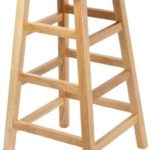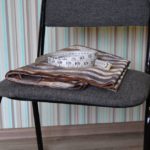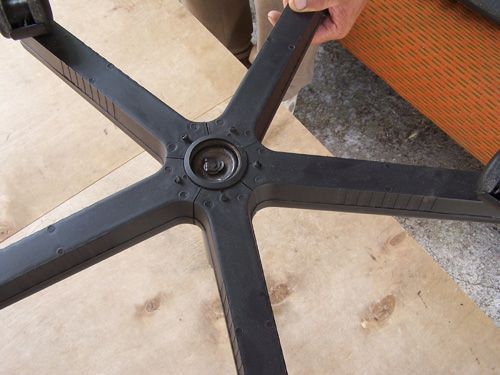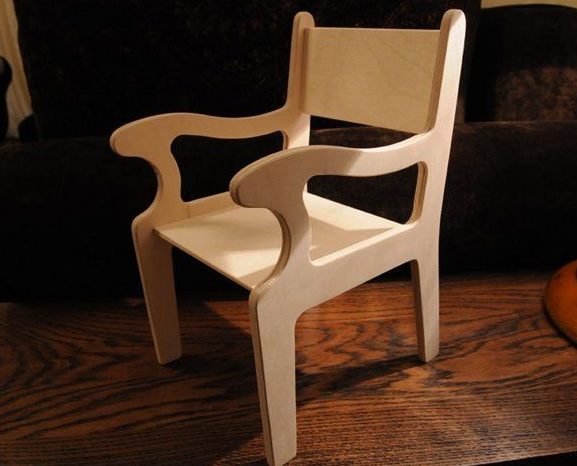DIY bar stool cover
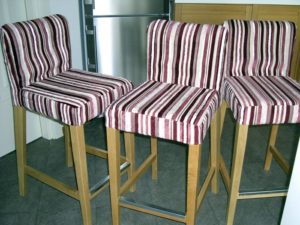 You can embellish the interior decoration of a room or give it originality and comfort with the help of decorative elements. Cute little things made with your own hands are great for this purpose. And one of these things is a chair cover. It will not only extend the service life of new furniture or update the appearance of old furniture, but will also transform the interior: after renovation, to create a festive atmosphere or give the room bright colors.
You can embellish the interior decoration of a room or give it originality and comfort with the help of decorative elements. Cute little things made with your own hands are great for this purpose. And one of these things is a chair cover. It will not only extend the service life of new furniture or update the appearance of old furniture, but will also transform the interior: after renovation, to create a festive atmosphere or give the room bright colors.
The content of the article
Types of chair covers
Making this item yourself is not such a difficult task. It is enough to have a desire, to know what the final result should be and to show creativity. But first you need to understand what type you will use.
Case options are divided according to the following characteristics:
- base material: woven or knitted from yarn;
- how much it covers the object: completely, only the back or seat;
- period of use: permanently, temporarily (as decor for some special event).
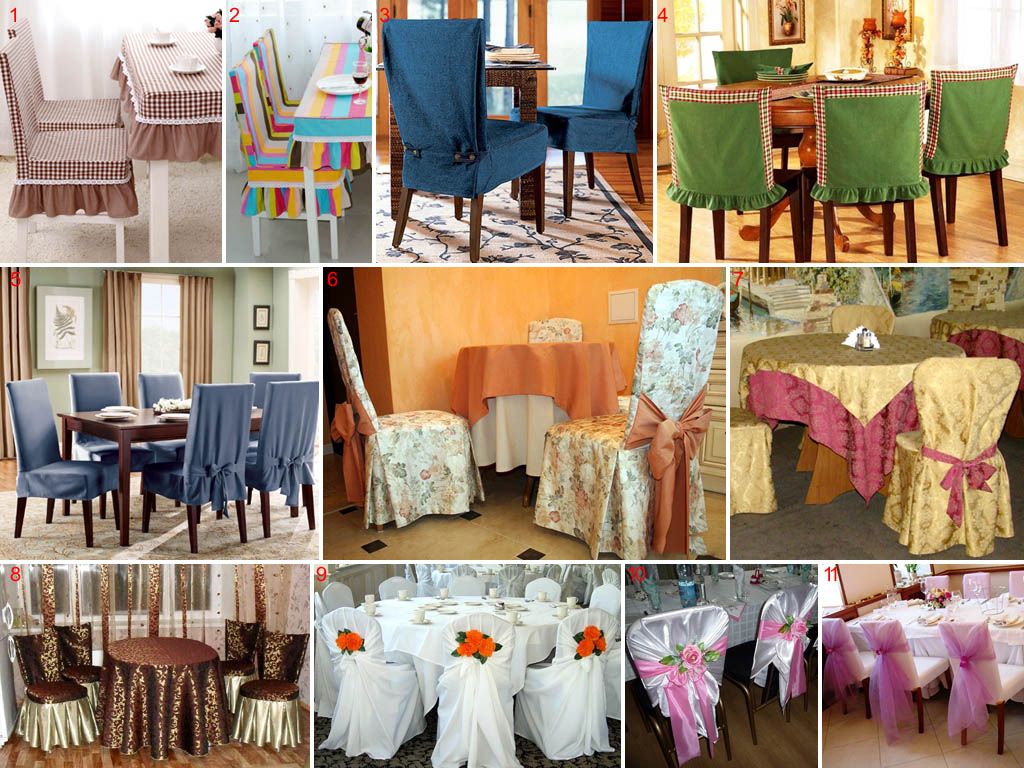
The required amount of starting material and production time will depend on the chosen variation.
Preparing to make a chair cover with your own hands
Before starting any needlework, it is necessary to carry out preparatory work. In this case, they consist in choosing the material and taking measurements. But first, decide how closed the surface of the object will be. It will be completely hidden under the cover or the product will only cover the back or seat. Also, when completely closed, it will be a single thing or a set consisting of separate parts (a cape for the back and a cover for the seat).
Another important point is the choice of source material for the cover of a bar stool or any other chair: fabric or yarn. Of course, for craftswomen who are good at knitting, threads will be preferable, but we suggest considering the woven option.
Taking measurements
Measuring furniture parameters will be useful for you to create a pattern and calculate the required amount of fabric. For this process, you need to measure the following dimensions with a measuring tape (tape measure or tailor's meter):
- height and width of the back;
- seat length and width;
- the distance from the seat to the lowering point - this can be either the floor or the point to which the drapery is planned to be lowered.
IMPORTANT! When calculating, add a few centimeters to each measurement for a loose fit.
Deciding on color and fabric
The next stage is choosing the color and texture of the fabric. Here you need to build on how often this item will be used. For permanent use, preference should be given to material with the following parameters:
- Sufficient density. This is especially true for options for kitchen furniture, because these variations will often get dirty. The product must withstand numerous washes. Gabardine, linen, satin and cotton have this quality.
- Match the colors to the color scheme of the design.For example, for the kitchen, it looks great to have covers and tablecloths made from the same fabric.
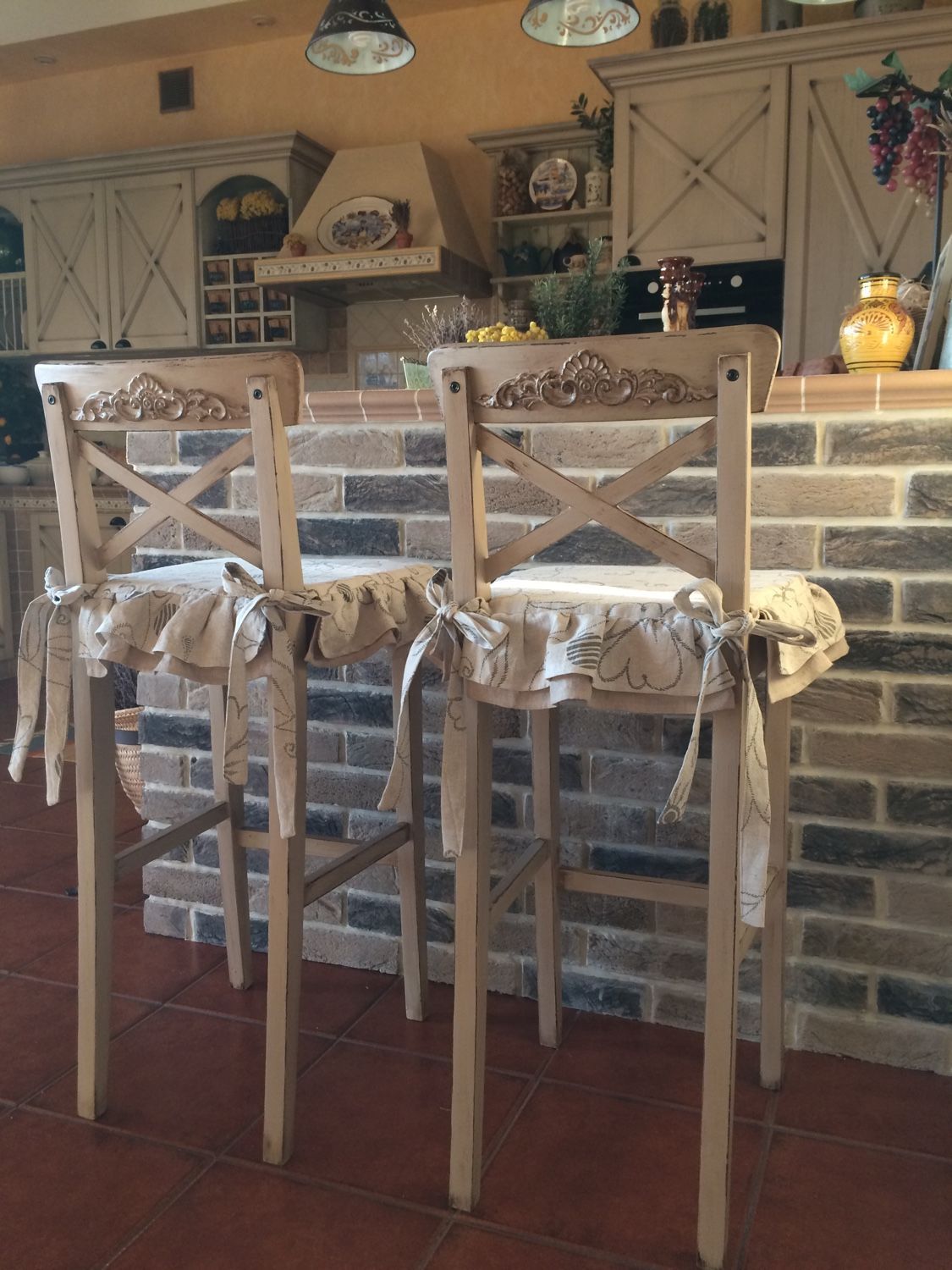
If the item has a decorative function, then it is not necessary to choose durable fabric. In this case, the color and texture of the product are more important. Most often, a catchy color and plastic fabric is chosen, which can be beautifully laid with drapery folds and decorated with decor: bows, flowers or ribbons.
How much material is needed for the case?
After taking measurements and choosing fabric, you can proceed to purchasing the material. Sewing one product requires about three meters of fabric. If you want to know more precisely how much fabric you will need, then when going to the store, take a pattern. By applying it to the fabric in the way you will cut the fabric, you will find out the exact quantity.
ATTENTION! The fabric is cut in one direction, along the warp thread.
Making a pattern
There is no single pattern option for all chairs. It is best if you make an individual drawing. But you can also use several ready-made variations, making the necessary adjustments for your furniture.
One of the simplest examples is a one-piece version:
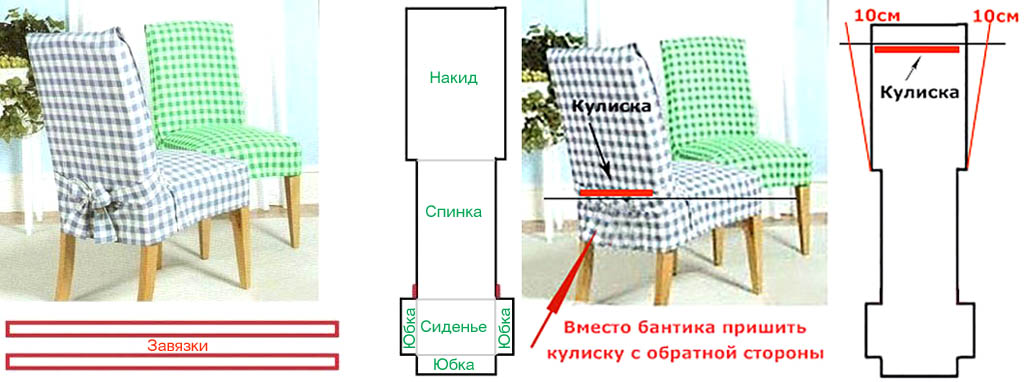
For chairs with a seat with rounded edges, the following pattern is suitable:
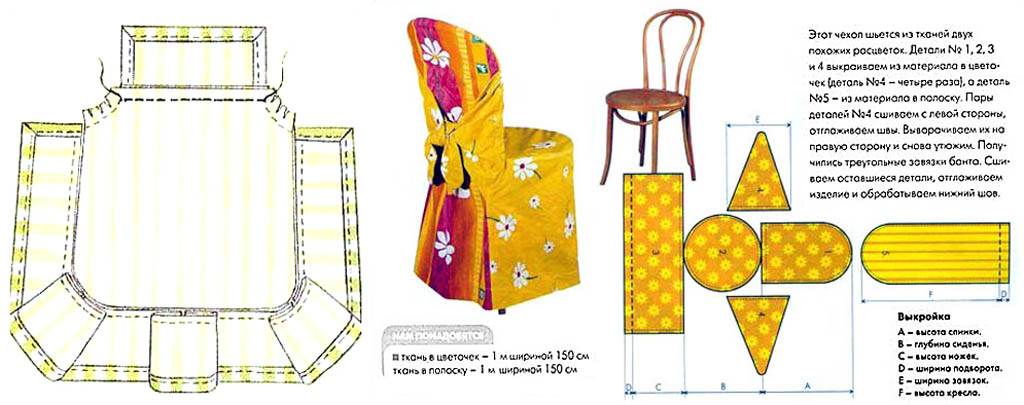
If you want to make protection only for the seat, then use this variation:
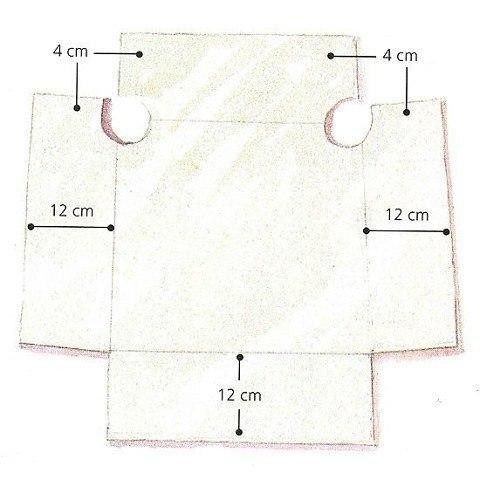
How to choose a chair cover design
The choice of decorative elements for decorating a home has always been based on the general stylistic direction of the room. The requirements are different for different rooms. But the following recommendations are highlighted:
- For a kitchen area, it is preferable to have a variation of the product that will be easy to take off and put on, will not interfere with a person’s movement around the room, and will be especially wear-resistant.
- For the living room, restrained, sometimes even strict, lines are acceptable. It is advisable to use muted colors without a pattern or with slight geometry.
- In the bedroom, light, airy models made of flowing fabric with flounces and frills are acceptable.
- Make children's chairs from bright fabric with a cheerful pattern.
IMPORTANT! For products that serve the function of festive decoration, it is better to focus on decorative elements: bows, artificial flowers, ribbons and drapery.
Not only stylish, but also functional
Chair covers not only have a decorative function, they protect your furniture from dirt and damage. This is especially true if small children live in the house. In addition, they provide an opportunity to update the appearance of your home at no extra cost, and also allow old, comfortable furniture to find a second life. After all, reupholstery and restoration are significant expenses that many cannot afford. Sewing furniture covers means not only transforming the interior, but also a fun, useful way to spend a free evening. This method will also help add comfort and warmth to your family nest.

